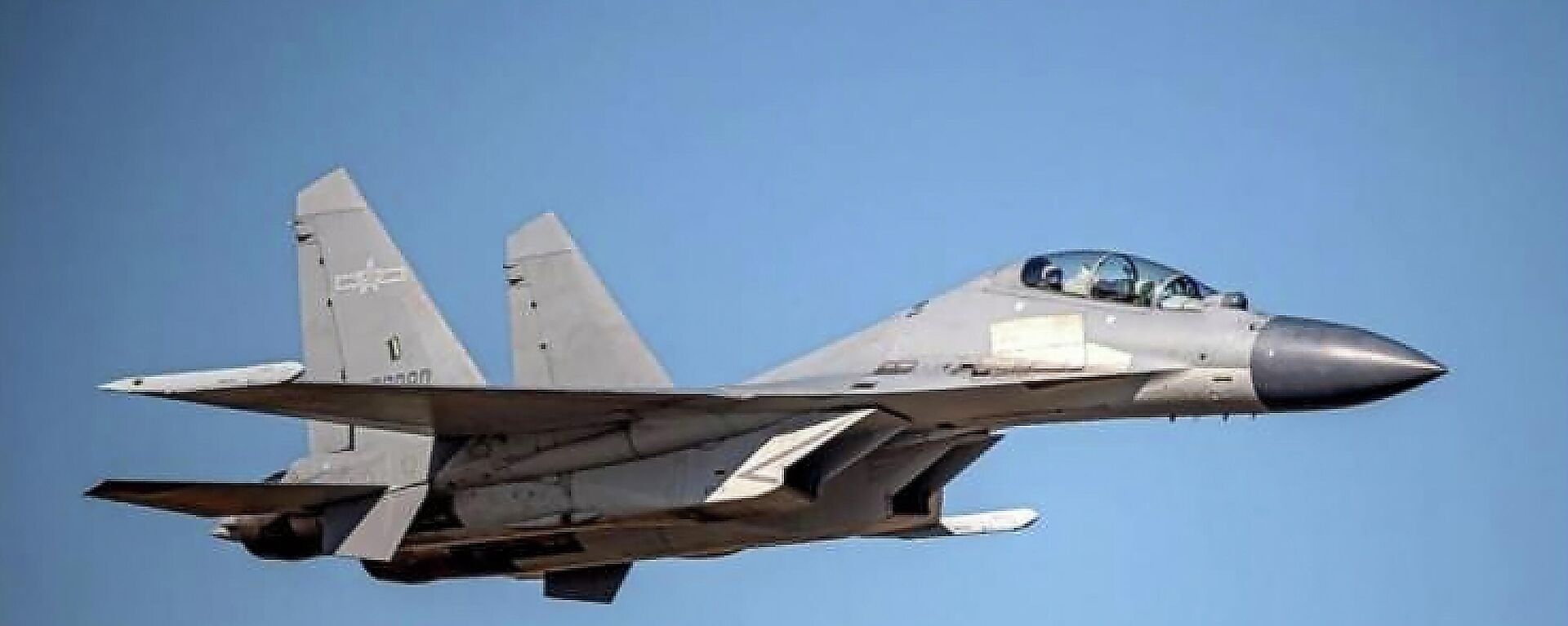https://sputnikglobe.com/20220731/nato-threat-strategic-interests-great-sea-power-status-key-details-on-russias-new-naval-doctrine-1097976929.html
NATO Threat, Strategic Interests, Great Sea Power Status: Key Details on Russia’s New Naval Doctrine
NATO Threat, Strategic Interests, Great Sea Power Status: Key Details on Russia’s New Naval Doctrine
Sputnik International
Post-Soviet Russia’s first naval doctrine was established in 2001 by presidential decree, with a major update approved in 2015 amid rising tensions with NATO... 31.07.2022, Sputnik International
2022-07-31T11:54+0000
2022-07-31T11:54+0000
2022-07-31T12:16+0000
doctrine
russian navy
russia
oceans
https://cdn1.img.sputnikglobe.com/img/07e6/07/1f/1097976638_0:124:3199:1923_1920x0_80_0_0_4cc58ca3267a12320dc7d66b3533cd58.jpg
President Vladimir Putin signed a decree approving an updated Naval Doctrine on Sunday as Russia marked Navy Day – a holiday dedicated to the sailors, naval aviation, and coastal troops serving in the maritime branch of the Russian Armed Forces.“We have transparently marked the borders and zones of Russia’s national interests – including economic, vital and strategic ones,” Putin said during the signing ceremony, which took place at the Peter and Paul Fortress in St. Petersburg.The updated doctrine, published on the Kremlin’s website on Sunday, lays out the strategic directions and goals of the Navy and commercial maritime fleets in accordance with Russia’s broader national security strategy and military doctrine, and includes principles on the study, development, use, and protection of resources of the world’s oceans, the defense of Russian sovereignty and national interests, measures to guarantee accessibility to world trade routes, and an assessment of risks and threats to Russia.The document includes a provision outlining the state’s commitment to the “preservation of Russia’s status as a great sea power, whose activities are aimed at preserving strategic stability in the world’s oceans, the strengthening of national influence and the development of mutually beneficial partnership relations in the sphere of maritime activities in conditions of the emerging polycentric world.”The strengthening of Russia’s Arctic maritime influence, including along the continental shelf, and the development of the Northern Sea Route transport corridor as a national transport artery that’s competitive on the global market, are featured as major national priorities.US and NATO as Key Strategic ThreatsThe document pays special attention to the role played by the United States and the North Atlantic Alliance in shaping Russia’s maritime priorities, perceptions of threats, and the means to neutralize these threats.The document notes that unfortunately, the factor of naked military power has not disappeared from international affairs, with “major world powers which possess significant naval potential and a developed system of bases continuing to increase their naval presence in geopolitically significant areas of the world’s oceans, including in areas bordering the territory of the Russian Federation.”The doctrine outlines 10 main threats to Russia in the maritime space:The doctrine outlines several challenges affecting Russia’s maritime activities, including what is perceived to be the country’s insufficient role in maritime transport activities, demonstrated by the low number of ships operating under the Russian state flag in percentage terms. The poor state and small size of the country’s scientific research fleet, and sanctions by a number of governments against Russia’s military shipbuilding and oil and gas sectors, including in the area of cutting-edge technologies, equipment deliveries, and foreign investment, are listed as additional challenges.Other risks mentioned in the document include an insufficient network of support bases outside Russia for the Russian Navy, the climate crisis, and the threat of pandemics, including the coronavirus. The latter, the doctrine stresses, “has led to geopolitical uncertainty and a global economic crisis connected to the desire by leading foreign governments to alter the current world order, a growing tendency for the termination of processes of globalization, a battle for global leadership, the rising role of national economies and state management, including in the sphere of maritime activity.”Six Strategic DirectionsIn light of these threats, risks, and challenges, the doctrine outlines Russia’s goals. These, it says, include the “development of Russia as a great naval power and the strengthening of its position among leading global naval powers,” a requirement for more resources to ensure the country’s national interests in the world’s oceans, in line with the principles and norms of international law. The maintenance of strategic stability, and the defense of Russia’s sovereign rights to its continental shelf, efforts to increase competitiveness of the Russian transport fleet and the Northern Sea Route, and the strengthening of the operational capabilities of the Navy to ensure national security and national interests in the world’s oceans are also listed.This includes the need to increase the size of and upgrade Russia’s commercial fleet and Navy, the creation of new, large-scale maritime transport and logistics centers at existing ports, and, where possible, expansion of bilateral and international scientific cooperation in the study of the world’s oceans.The Atlantic direction pays particular attention to the threats to Russian security posed by the NATO alliance – particularly its plans to push military infrastructure up to Russia’s borders and attempts to assign the alliance “global functions.” Here, the Navy’s goals are said to include preserving national security and “creating the conditions for stable economic cooperation with foreign governments.”In the Indian Oceanic strategic direction, priority is paid to the development of the “strategic” naval partnership with India, as well as cooperation with Iran, Iraq, and other regional states, plus a general increase in Russian maritime presence in the region. Similar goals are mentioned in the Pacific, among them the need to expand the Russian Navy’s accessibility to regional ports, and cooperation with regional powers and groups of states in the interests of preserving strategic stability.
https://sputnikglobe.com/20220731/president-putin-takes-part-in-st-petersburg-navy-day-parade-1097971305.html
https://sputnikglobe.com/20220731/uav-targets-black-sea-fleet-hq-in-sevastopol-governor-says-1097971151.html
https://sputnikglobe.com/20220724/turkish-observers-us--eu-hindering-russo-turkey-efforts-to-solve-food-crisis-mediate-peace-1097745149.html
https://sputnikglobe.com/20220531/chinas-j-16-fighter-jets-deployed-in-latest-joint-strategic-patrol-with-russia-1095895195.html
https://sputnikglobe.com/20220422/why-india-wont-refuse-russian-arms-supplies-despite-uks-sweet-defence-deal-us-threats-1094977390.html
Sputnik International
feedback@sputniknews.com
+74956456601
MIA „Rossiya Segodnya“
2022
News
en_EN
Sputnik International
feedback@sputniknews.com
+74956456601
MIA „Rossiya Segodnya“
Sputnik International
feedback@sputniknews.com
+74956456601
MIA „Rossiya Segodnya“
doctrine, russian navy, oceans
doctrine, russian navy, oceans
NATO Threat, Strategic Interests, Great Sea Power Status: Key Details on Russia’s New Naval Doctrine
11:54 GMT 31.07.2022 (Updated: 12:16 GMT 31.07.2022) Post-Soviet Russia’s first naval doctrine was established in 2001 by presidential decree, with a major update approved in 2015 amid rising tensions with NATO, the Ukraine crisis, and Moscow’s growing strategic partnership with China. The new doctrine supersedes the 2015 document and adds a number of important new provisions.
President Vladimir Putin signed a decree approving an updated Naval Doctrine on Sunday as Russia marked Navy Day – a holiday dedicated to the sailors, naval aviation, and coastal troops serving in the maritime branch of the Russian Armed Forces.
“We have transparently marked the borders and zones of Russia’s national interests – including economic, vital and strategic ones,” Putin said during the signing ceremony, which took place at the Peter and Paul Fortress in St. Petersburg.
“First and foremost, these are our Arctic waters, the Black, Okhotsk, Bering and Baltic Seas, as well as the Kuril Straits. We will ensure their protection firmly and by all means,” Putin said. The Navy, he stressed, is tasked with responding “with lightning speed to anyone who decides to encroach on our sovereignty and freedom.”
The updated doctrine,
published on the Kremlin’s website on Sunday, lays out the strategic directions and goals of the Navy and commercial maritime fleets in accordance with Russia’s broader national security strategy and military doctrine, and includes principles on the study, development, use, and protection of resources of the world’s oceans, the defense of Russian sovereignty and national interests, measures to guarantee accessibility to world trade routes, and an assessment of risks and threats to Russia.
The document includes a provision outlining the state’s commitment to the “preservation of Russia’s status as a great sea power, whose activities are aimed at preserving strategic stability in the world’s oceans, the strengthening of national influence and the development of mutually beneficial partnership relations in the sphere of maritime activities in conditions of the emerging polycentric world.”
The strengthening of Russia’s Arctic maritime influence, including along the continental shelf, and the development of the Northern Sea Route transport corridor as a national transport artery that’s competitive on the global market, are featured as major national priorities.
US and NATO as Key Strategic Threats
The document pays special attention to the role played by the United States and the North Atlantic Alliance in shaping Russia’s maritime priorities, perceptions of threats, and the means to neutralize these threats.
“Russia’s development in the modern world is taking place against the background of major and new challenges and threats to its national security, connected first and foremost to Russia’s geopolitical status and its role in world politics. Russia’s course for an independent foreign and domestic policy brings about resistance from the United States and its allies, which seek to preserve their global dominance, including in the world’s oceans. Their policy of containing Russia calls for a policy of political, economic, military and informational pressure,” the doctrine states.
The document notes that unfortunately, the factor of naked military power has not disappeared from international affairs, with “major world powers which possess significant naval potential and a developed system of bases continuing to increase their naval presence in geopolitically significant areas of the world’s oceans, including in areas bordering the territory of the Russian Federation.”
The doctrine outlines 10 main threats to Russia in the maritime space:
The strategic course being pursued by the USA to “dominate” the oceans and Washington’s global influence on the international processes, including those connected to the use of maritime transport arteries and energy resources.
The push by the US and its allies to try to limit Russia’s access to the resources of the world’s oceans, and vital maritime transport routes.
Territorial claims against Russia by a number of governments related to some of the country’s coastal areas and islands.
The deployment of NATO military infrastructure near Russia’s borders, and the growing number of alliance exercises in the sea areas near the country.
The attempt by the US to reach overwhelming superiority in naval power, as well as rising capabilities of other naval powers.
Military conflicts in areas of special geopolitical significance to Russia and its allies, as well as countries which have access to the world’s oceans.
The economic, political, international legal, informational and military pressure on Russia aimed at discrediting or reducing the effectiveness of its maritime activities.
Efforts by some governments to weaken Russia’s control over the Northern Sea Route, including through the growing presence of foreign military infrastructure in the Arctic.
Attempts by some countries to change existing international maritime legal agreements in pursuit of selfish geopolitical interests.
And finally, the growing threat of international terrorism, piracy, and illegal smuggling of weapons, drugs, chemicals, and radioactive substances.
The doctrine outlines several challenges affecting Russia’s maritime activities, including what is perceived to be the country’s insufficient role in maritime transport activities, demonstrated by the low number of ships operating under the Russian state flag in percentage terms. The poor state and small size of the country’s scientific research fleet, and sanctions by a number of governments against Russia’s military shipbuilding and oil and gas sectors, including in the area of cutting-edge technologies, equipment deliveries, and foreign investment, are listed as additional challenges.
Other risks mentioned in the document include an insufficient network of support bases outside Russia for the Russian Navy, the climate crisis, and the threat of pandemics, including the coronavirus. The latter, the doctrine stresses, “has led to geopolitical uncertainty and a global economic crisis connected to the desire by leading foreign governments to alter the current world order, a growing tendency for the termination of processes of globalization, a battle for global leadership, the rising role of national economies and state management, including in the sphere of maritime activity.”
In light of these threats, risks, and challenges, the doctrine outlines Russia’s goals. These, it says, include the “development of Russia as a great naval power and the strengthening of its position among leading global naval powers,” a requirement for more resources to ensure the country’s national interests in the world’s oceans, in line with the principles and norms of international law. The maintenance of strategic stability, and the defense of Russia’s sovereign rights to its continental shelf, efforts to increase competitiveness of the Russian transport fleet and the Northern Sea Route, and the strengthening of the operational capabilities of the Navy to ensure national security and national interests in the world’s oceans are also listed.
This includes the need to increase the size of and upgrade Russia’s commercial fleet and Navy, the creation of new, large-scale maritime transport and logistics centers at existing ports, and, where possible, expansion of bilateral and international scientific cooperation in the study of the world’s oceans.
The doctrine outlines six strategic priority regions for the Russian Navy, including the Arctic, Pacific, Atlantic (which includes the Baltic, Azov, Black and Mediterranean Seas under its domain), the Caspian Sea, the Indian Ocean and the Antarctic Sea directions. In each area, priorities include the strengthening of the Navy’s capabilities, parrying threats to national security, improving command and control, and, where relevant, creating specialized fleets –including icebreakers, and search and rescue forces.
The Atlantic direction pays particular attention to the threats to Russian security posed by the NATO alliance – particularly its plans to push military infrastructure up to Russia’s borders and attempts to assign the alliance “global functions.” Here, the Navy’s goals are said to include preserving national security and “creating the conditions for stable economic cooperation with foreign governments.”
In the Indian Oceanic strategic direction, priority is paid to the development of the “strategic” naval partnership with India, as well as cooperation with Iran, Iraq, and other regional states, plus a general increase in Russian maritime presence in the region. Similar goals are mentioned in the Pacific, among them the need to expand the Russian Navy’s accessibility to regional ports, and cooperation with regional powers and groups of states in the interests of preserving strategic stability.







